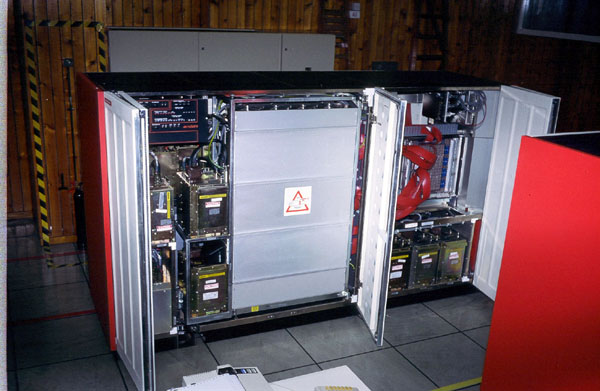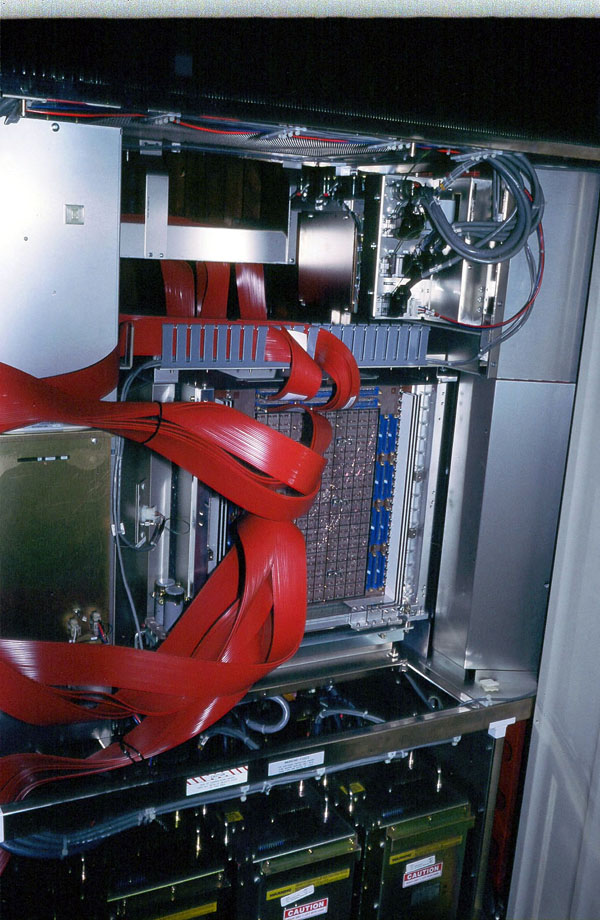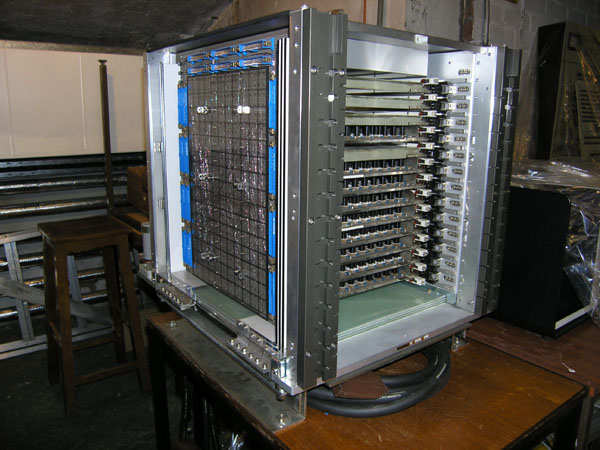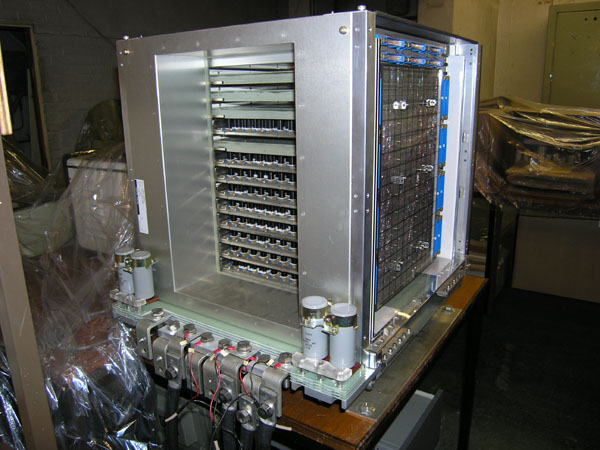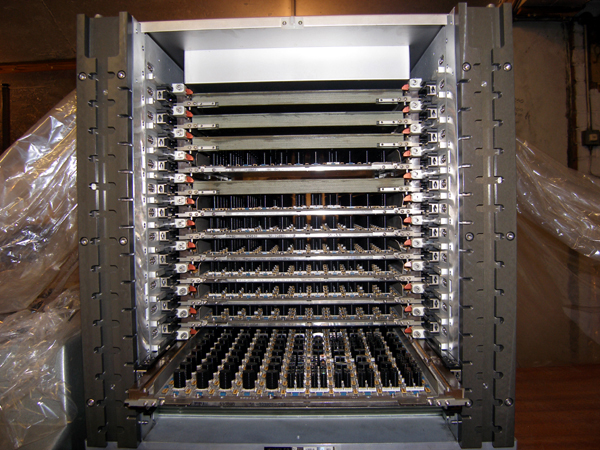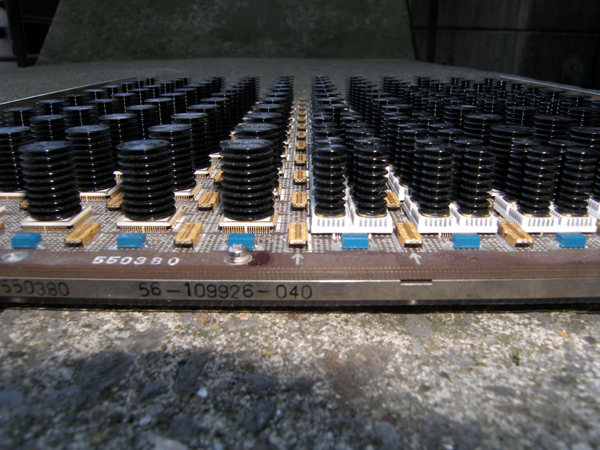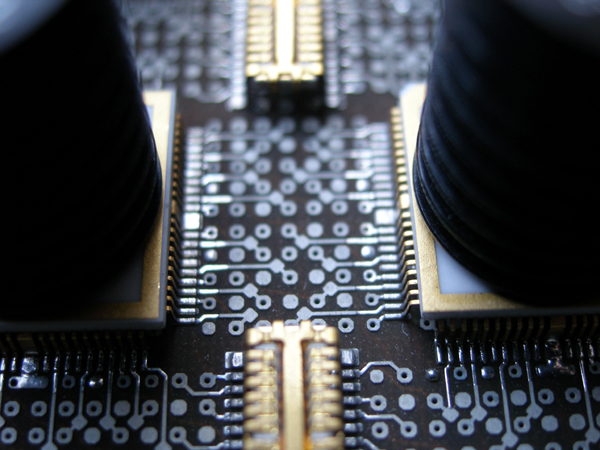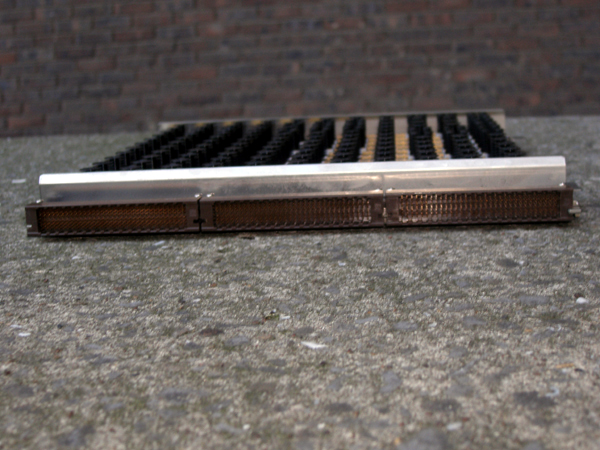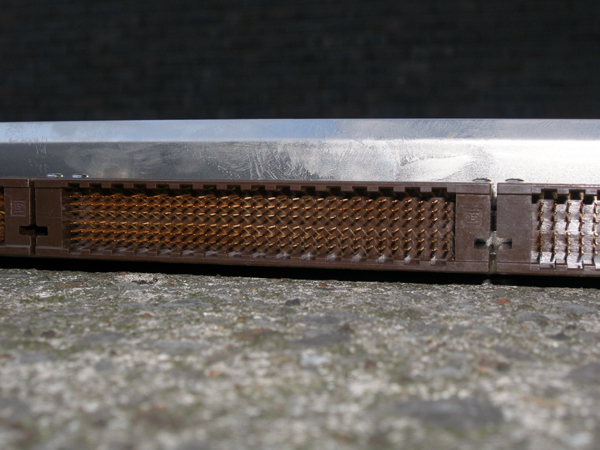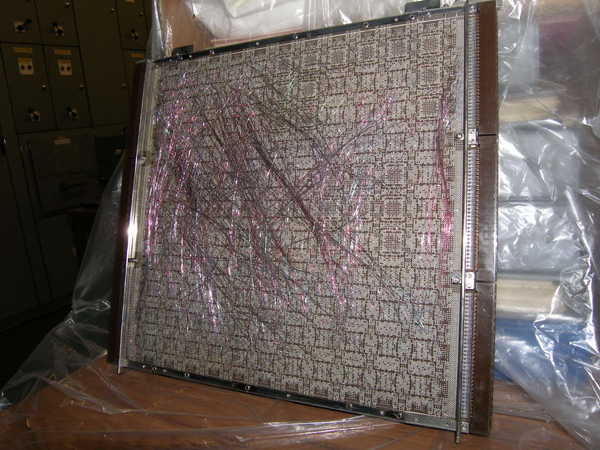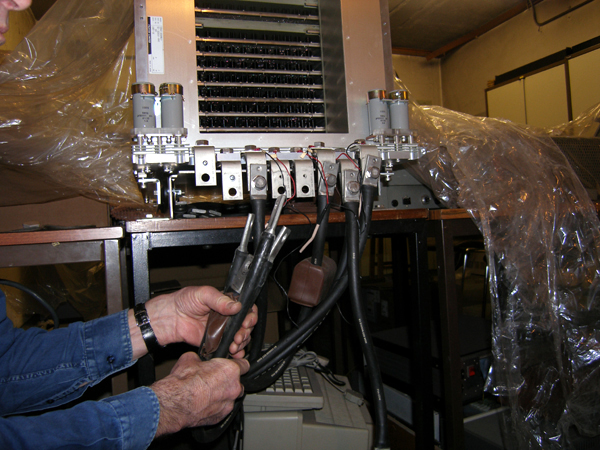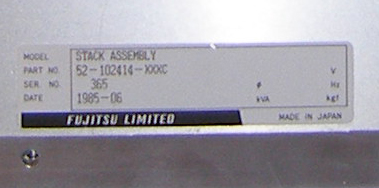The AMDAHL 5860 had a 24 nanosecond machine cycle time with a bus width of 72 bits - 64 data bits and 8 bits of parity. Keep this bus width in mind when you compare the VLSI processor chips that obsoleted the mainframe, they had a bus width of just 8 bits but much, much faster, because of shorter interconnections.
The Amdahl mainframe with its covers open. At the top left is a control panel, and below it three power supplies.These took high voltage alternating current and converted it to low voltage direct current. They were heavy - 50Kg each.To the right is a gate containing 40MByte of RAM.
To the right of that is the CPU (Central Processing Unit),
called The Stack and below it its power supplies.
The Stack was connected by the large red ribbon cables
to the RAM and I/O channels.
We have one of the power supplies described Here
We have The Stack in the collection.
| Mus.Cat: NEWUC:2003.19 | Mnfctr: AMDAHL | Date: 1985 | Ser. No: 365 | Model: 5860 |
| Comp: CPU | Length: 600 mm | Width: 480 mm | Depth: 640 mm | Weight: 96 Kg |
To the right and at the bottom can be seen three of the bus-bars that delivered electricity to the Stack.
Here is a view of The Stack, side on left, front on right. In the front can be seen 13 boards end on. In earlier mainframe configurations these boards would have been in a single plane of rows and columns mounted in a gate that could be swung open for access. But this meant that there were long connections between boards and long connections meant slower speed.In the AMDAHL 5860 the boards were one above the other connected by two busses, 12 layer printed circuit boards one on each side, meaning shorter connections, meaning faster speed.
they are from top to bottom:BLANK
BLANK
BLANK
Console Subsystem
BLANK
Input/Output Processor
Memory Bus Controller
Storage Unit
Buffer Unit
Instruction Unit
Execution Unit
Floating Point Unit
This is a view of the rear it is not just a piece of electronics but a piece of engineering. When the end came for the Amdahl 5860 scrap merchants had to be paid to take it away. (Scrap merchants paid us for the IBM 360 because they could recover precious metals from it. Scrap merchants took the IBM 370 for no payment because of its scrap value.)
In the end the Amdahl was unceremoniously craned from the computer room, cabinet by cabinet, into, big, battered, dirty wagons, with no care and driven off in a haze deisel fumes.
We had treated the Amdahl almost with reverence just to touch it was an privilege to actually open it up and pull bits out was unthinkable except to the Amdahl engineers.
This is a direct front view of the Stack with one of the eight boards withdrawn.The boards were called MCCs (Multiple Chip Carriers) are 14 layer printed circuit boards that accomodated both LSI RAM and Logic chips to implement an entire system function. The LSI RAM chips, (with an access time of 7.5 nanoseconds - 133 Mhz), provide storage for registers, buffers, and control stores. The Logic chips contain 400 circuits and have an average switching time of 400 pico seconds.
The Stack could accommodate twelve boards so four board places were replaced with Bakelite blocks, because the whole Stack had chilled air blown through it to take away the heat and the designers did not want the chilled air to go through the vacant spaces. They wanted it to go through the spaces between the boards where the 'black' cylinders are.
This is a close-up of one of the boards and the black cylinders. They are heat sinks. Each heat sink is glued to a white square chip.The chips on the right with four narrow heat sinks are LSI RAM chips. Those on the left with a single large heat sink are Logic chips.
The chips use Emitter Coupled Technology, which though fast, used a lot of electricity, so generated a lot of heat that had to be dispersed.
This is a cloe-up of the ECL chip connections. There are 21 on each side, so 84 in total.This is a photograph of the side of the board there are three blocks of connections on each side. Bear in mind these are the sides of the boards when it is inserted into the body of the Stack. How are the connections made?
This is a close-up of one of the three blocks, it has 32 x 6 gold plated pins, totalling 192 pins. Three blocks this side and three the other means 1152 pins, all have to be perfectly made if the CPU is to operate.This is a rear view of the 14 layer printed circuit board, but still needed a deal of back wiring.
Each board measured 11" x 13" and could accomodate 121 LSI chips (over 48,000 circuits).
This is the rear of the Stack. At the bottom is the connectors for the power cables.
There are nine bus-bars each heafty bits if copper.
On the left side is a label ...
Here it is, enlarged and rotated. It says:
| MODEL | STACK ASSEMBLY | ||
| PART NO | 52- 102414- )00( C | V | |
| SER NO | 365 | # | Kg |
| DATE | 1985-06 | kVA | k?? |
There is interesting information here. Unfortunately not the weight or power KVA consumption.
